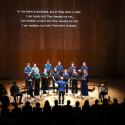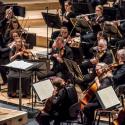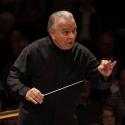Necessity has certainly been the mother of invention over the past three weeks, and orchestras especially, left in the dark with no means of coming together other than virtually, have had to adapt double-quick. The players, of course, are artists, and in league with good technical teams they've yielded some winners which may bring more people to the real thing when life as we knew it resumes.
From pianists livestreaming in terrible sound to a whole bunch of players taking on orchestral music with state-of-the-art engineering for a polished end result has been quite a leap. The first that appeared on my radar were wonderfully inventive, but seemed to pose problems of length. Ravel's Boléro lasts anything from 14 to 18 minutes, depending on the tempo, but the Orchestre National de France gave us four - inevitably still showing off the soloistic skills of their wind and brass along the way. I'm surmising that the full ensemble at the end is taken from a complete recording. And look, no conductor! A good choice of work in that respect, since the side-drum allows for no variations in tempo and only individual players can play around just a little with the theme.
Obviously the whole finale of Beethoven's Ninth Symphony would be out of the question, unless you used a chamber-sized orchestra and chorus along with four soloists. But from the Rotterdam Philharmonic Orchestra we also get more than the usual music-minus-voices arrangement of the "Ode to Joy" as the European anthem. So there's creativity here, in addition to the message that "all people must come together" (as it seems fair to translate Schiller's "Alle Menschen werden Brüder").
Maybe more British orchestras have something of equal quality in the pipeline, but so far I've only come across some of the Royal Opera House Orchestra strings in lovely playing of (part of) the central slow movement from Bach's Concerto for Two Violins. More chamber music is certainly one possibility.
Award for The Complete to date goes to the superb Lahti Symphony Orchestra, encouraging one to dream about that glorious concert-hall and its lakeside setting with the full Sibelius Finlandia. In actuality, it would have a few more strings, but 62 is a very respectable number and this is one which takes some doing without a conductor. Which is not a wish that one could return to the Sovet experiment of the 1920s ensemble Persimfans. There's no substitute for the magic of the men and women on the podium when they're really good, just as there's no substitute for hearing an orchestra live. May that not be too far off; in the meantime, let's enjoy the quirky offerings of players and remember how hard it is for them not to meet and work together.














Add comment